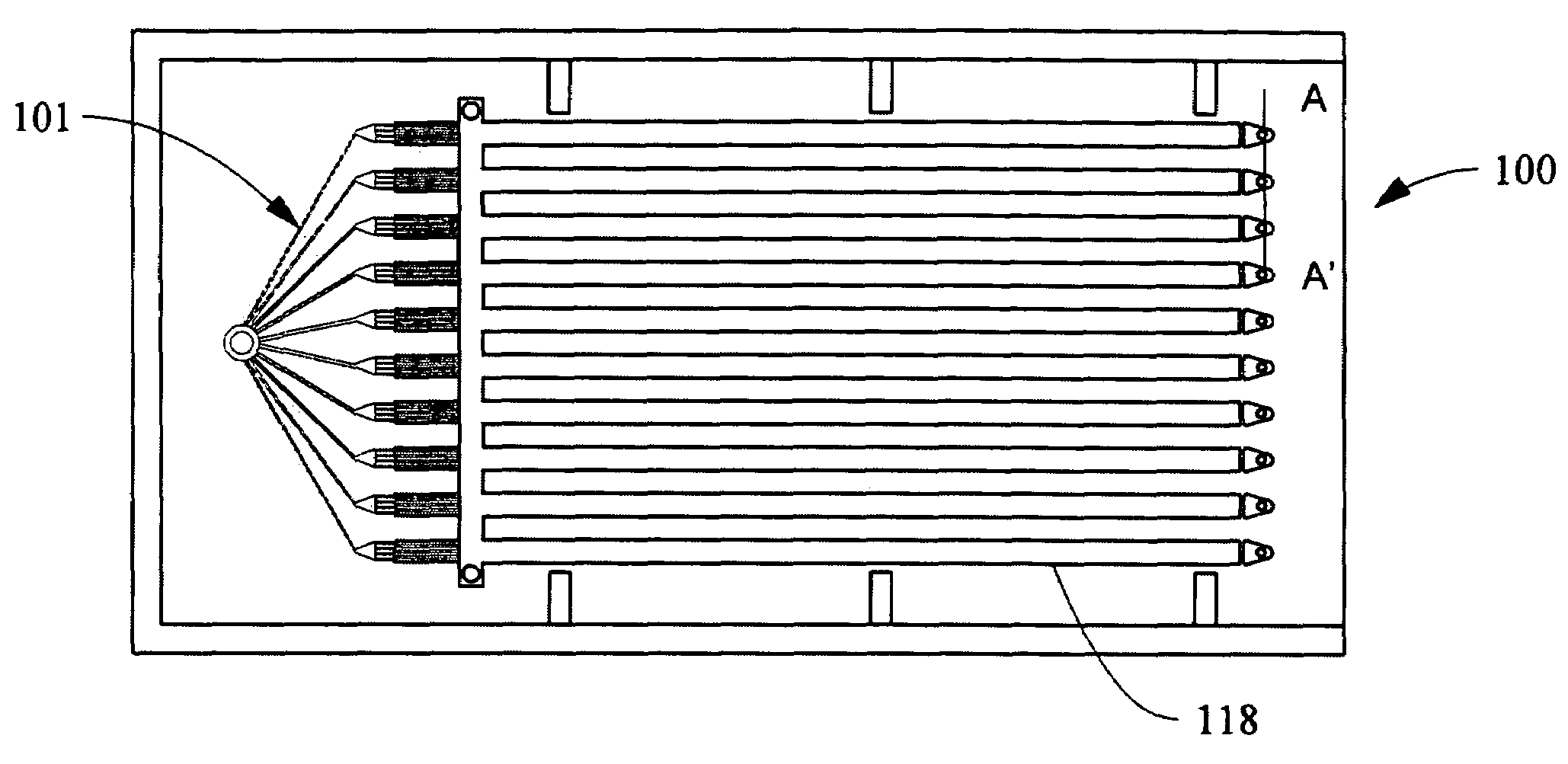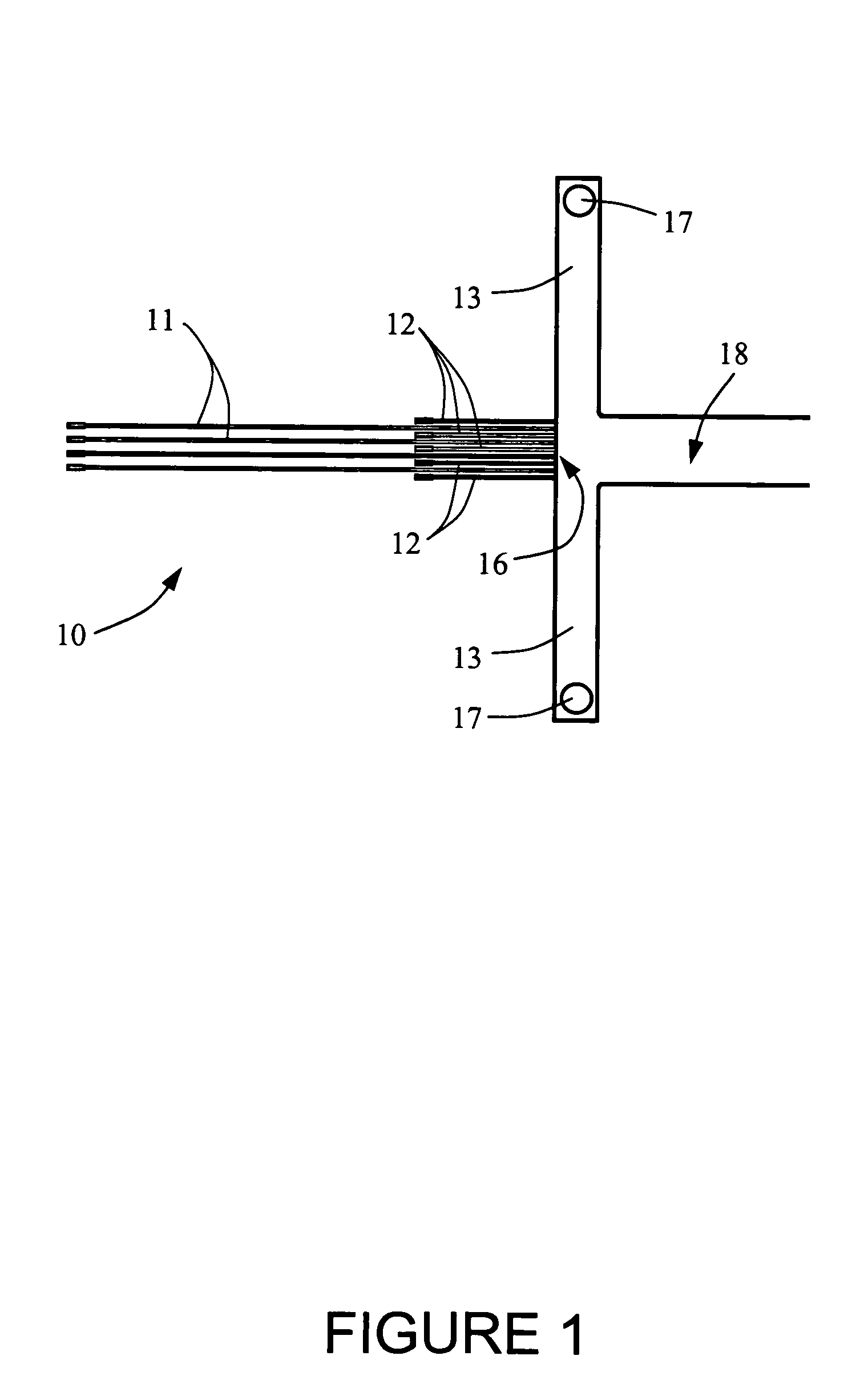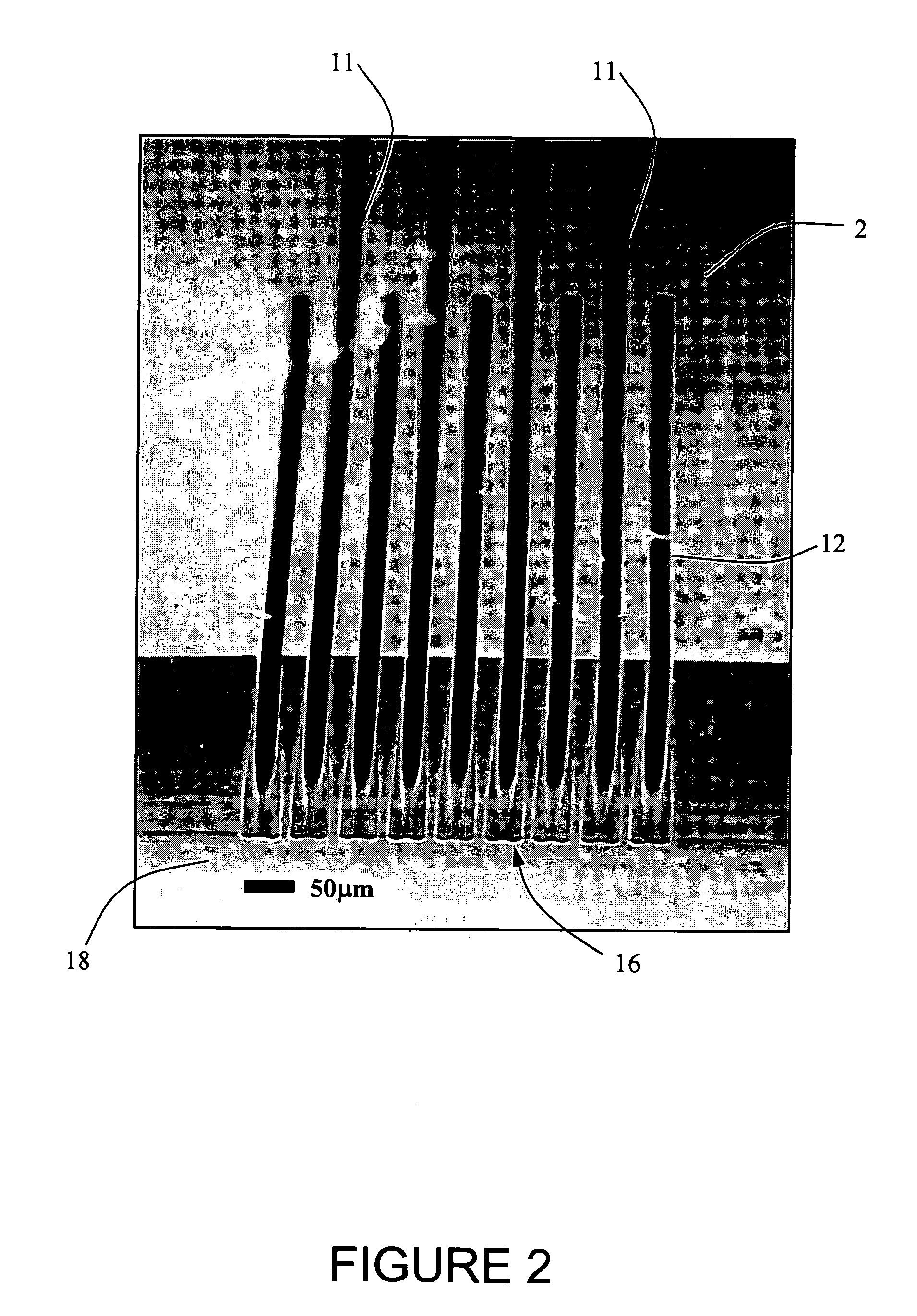Microfabricated chemical reactor
a chemical reactor and micro-fabricated technology, applied in chemical/physical/physical-chemical process catalysts, metal/metal-oxide/metal-hydroxide catalysts, metal/metal-oxide/metal-hydroxide catalysts, etc., can solve the problems of difficult precision control, non-stoichiometric portions, and regions of reaction mixtures, so as to reduce the pressure drop through the reactor and efficiently react the reaction components
- Summary
- Abstract
- Description
- Claims
- Application Information
AI Technical Summary
Benefits of technology
Problems solved by technology
Method used
Image
Examples
example 1
[0060]A first design of a microfabricated reactor within the present invention has been adapted to the chemistry of heterogeneous catalytic reactions. For such reactions, the high surface areas of traditional porous catalytic supports allow for a greater dispersion of the active surface sites and consequently, a higher reaction rate per volume of support. For heterogeneous catalytic reactions of moderate rate, such as some hydrogenations, processing in small volumes requires the highest attainable active surface area in order to have a practical reactor production rate. Planar metal films, while easy to integrate into microfabricated reactor designs using known thin film application methods, cannot attain the same active area as traditional catalyst particles through geometry alone. Therefore, while thin film catalysts may be sufficient for fast gas-phase reactions, such as ammonia oxidation, higher surface area catalysts can extend the range of applicable reactions in the microenvi...
example 3
[0095]As seen in FIG. 22 an array of 10 reaction channels 431 may be fabricated in silicon and may be connected through an array of on-chip microfluidic distribution channels. The gas inlet 436 may pass through a manifold 433 comprising 10 channels having widths that vary depending on the length to ensure an even distribution of flow to each reaction channel 431. The liquid inlet is split among the channels in a layer below the first layer that is depicted in FIG. 22 and meet the gas inlets in an interleaving fashion to provide a microfluidic manifold, an embodiment of which is shown in FIGS. 1 and 2. The reaction channels of reactor 430 are 2 cm long and 600 μm wide. The ten reaction channels 431 of reactor 430 contain integrated catalyst support structures 440, as seen in the photomicrograph of FIG. 23, that are posts 50 μm in diameter and 300 μm tall, and which are arranged in a staggered array. The void fraction of a catalyst of this design is 60%. Compared with packed-beds, whi...
PUM
| Property | Measurement | Unit |
|---|---|---|
| diameter | aaaaa | aaaaa |
| diameter | aaaaa | aaaaa |
| diameter | aaaaa | aaaaa |
Abstract
Description
Claims
Application Information
 Login to View More
Login to View More - R&D
- Intellectual Property
- Life Sciences
- Materials
- Tech Scout
- Unparalleled Data Quality
- Higher Quality Content
- 60% Fewer Hallucinations
Browse by: Latest US Patents, China's latest patents, Technical Efficacy Thesaurus, Application Domain, Technology Topic, Popular Technical Reports.
© 2025 PatSnap. All rights reserved.Legal|Privacy policy|Modern Slavery Act Transparency Statement|Sitemap|About US| Contact US: help@patsnap.com



